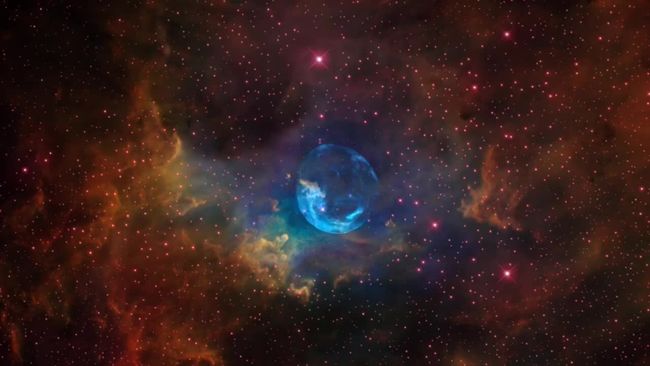A theoretical study suggests that cosmic ‘superbubbles’ could potentially disrupt entire galaxies, causing chaos in the universe.
If the neighboring galaxies have more supernova than the real galaxy does, they may produce black holes that may tamper with the indigenous dark matter balance. Later, such chaos becomes unmanageable and may destroy entire galaxies.

The world of dark matter and the regular world are connected only by their gravity and astronomers hope that the giant cavities in space known as “superbubbles” might hold the key to this connection.
Just as our galaxy and (in most cases) other galaxies host an unknown substance, which is called dark matter, our galaxy is also filled the same with a dark matter. The amount of circumstantial evidence for dark matter is quite overwhelming, yet, the very substance which we’re trying to unravel is probably the biggest mystery we have within the realm of cosmos.
Astronomers are trying hard to discover dark matter, and one way they can find out more about it is by studying its gravitational effect on normal matter. However, galaxies are incredibly busy environments with all their elements’ ways of interacting, happening, and energetic eruptions. So, for one to see dark matter, it’s paramount to have this influence separated from the normal tendencies of common matter.
Now, astronomers at the University of Tartu in Estonia may have found a clever connection point: superspots.
The paper that they submitted to the journal Astronomy & Astrophysics for peer-review and publication states that superbubbles are giant cavities that supernovas (powerful stellar explosions) carve out of the interstellar medium — the loose charged particles and dust that drift between stars.
It takes more than one supernova to create a superbubble and vast tracts of the universe harbour the conditions necessary for the formation of the immense stars which are usually found in large groups. They are punctual and loyal to one another, as well as they all fade out of existence close to each other. The wave of explosion from multi-supernovas causes a high-density region within the interstellar medium that can be up to thousands of light-years across — a superbubble.
Humidity having a lesser density than its surrounding carries minute gravitational differences in the around its areas. Employing superbubble simulations of the surrounding space, the researchers observed a limited rotation for both stars and dark matter confronted with different gravitational features of the superbubbles, thus becoming source of friction that slows them down.
The researchers discovered that the existence of superbubbles can influence the general rotation rate of stars and galaxies by about 4% in the span of a billion years. Over the lifetime of a galaxy, this can translate into taking away nearly half the energy that a galaxy can spin, altering orbits definitely not just for the stars, but also the dark matter.
The behavior of the superbubbles is quite separate for dark matter and stars. The superbubbles slow down the dark matter but not as much as the stars — this is where the difference in their evolution is. The intrinsic features of dark matter in galaxies, predominantly its rotational energy, also alter due to the friction originating from the superbubbles. As a result, the connection between dark matter and normal matter could be sensed significantly in particular ways because of a change in gravity.
Here is a valuable hint. The simulation results are the only basis for the researchers’ conclusions, but they expect that future studies will establish a more clear link between dark matter and ordinary matter by using superbubbles. Consequently, astronomers will be able to outline the positions and movements of stars just outside superbubbles and in this way observe the motions of dark matter in the environs of their study.
Do not forget to share your opinion with us to provide you with the best posts !



0 Comments